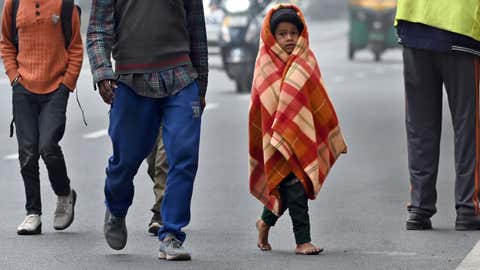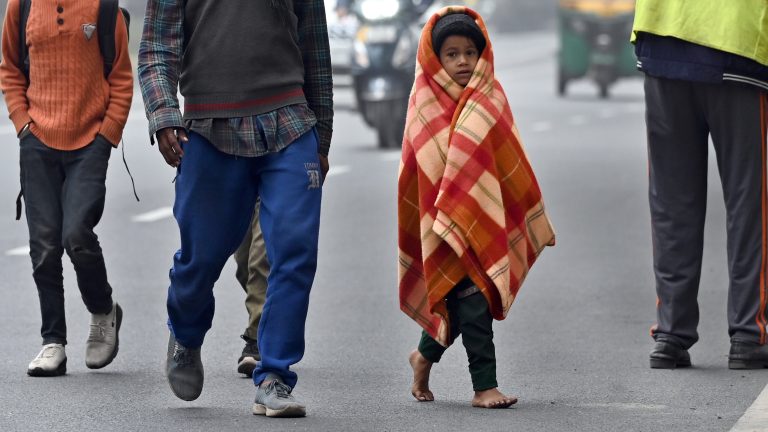

A child wearing a quilt walks barefoot on a cold morning in New Delhi
(Piyal Bhattacharjee/BCCL)
Friday 8 MarchAs Delhi residents prepared to put their winter clothes back in their hard-to-reach closets, they woke up on Thursday to the coldest March morning in the city in the last five years. The minimum temperature dropped to 8.8°C, about 5.4°C lower than the season average. The last time the national capital recorded such a low was in 2019, when the minimum temperature was 6.8 degrees Celsius on March 1 and 9 degrees Celsius on March 7.
This year, the thermometer readings dropped with each passing day. Even the afternoon offered little respite on Thursday, with maximum temperatures reaching just 26.4 degrees Celsius, two degrees Celsius colder than normal.
The early hours of Friday followed the same trend, with the national capital recording a minimum of 9.6 degrees Celsius, five degrees below normal again. In fact, minimum temperatures in Delhi are expected to remain below normal till Wednesday next week, according to the India Meteorological Department (IMD).
The culprit behind this unusual coldness? Transient Western Disturbance – Storm systems that originate in the Mediterranean Sea and bring wet weather across the northwestern parts of the country.
This weather system has been showering Jammu and Kashmir, Himachal Pradesh and Uttarakhand with rain and snow. Although there is no significant rain on the horizon in Delhi itself, the system is sending icy winds heading towards the capital. These freezing storms are the main reason why temperatures have remained below normal for the past four days.
Looking ahead, a fresh Western Disturbance is expected to impact the Western Himalayan region from Sunday evening. While this will not bring the same cold weather that Delhi just experienced, it could extend the chilly conditions, especially in the morning. However, daytime temperatures will begin to rise steadily starting Sunday.
So, Delhiites enjoy the cozy mornings and warm cups of tea while they are there, because summer will soon arrive.
As for the rest of northwest India, two successive western disturbances will start impacting the region from March 10 and 12, respectively. Under its influence, scattered and moderate rain/snow is likely to reach Jammu & Kashmir, Ladakh, Himachal and Uttarakhand for a few days. Punjab, Haryana and western Uttar Pradesh may also witness rainfall activity from March 12-13.
**
For weather, science, space and COVID-19 updates on the go, download Weather channel app (On Android and iOS store). It's free!

